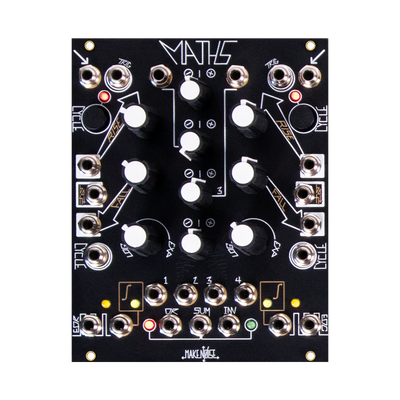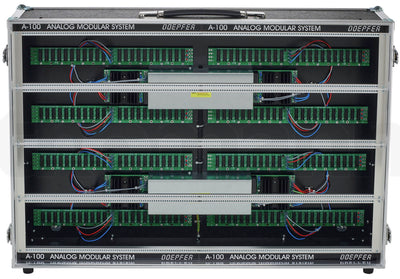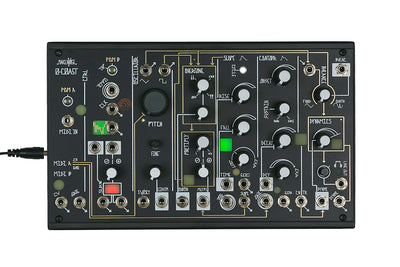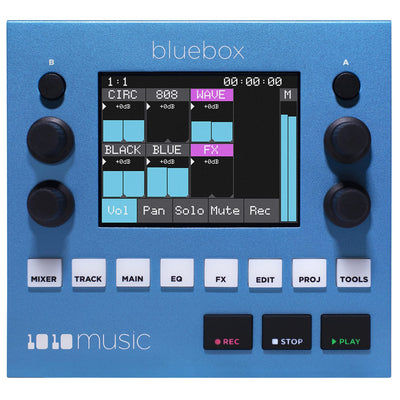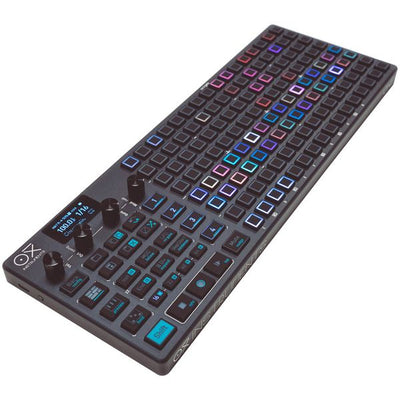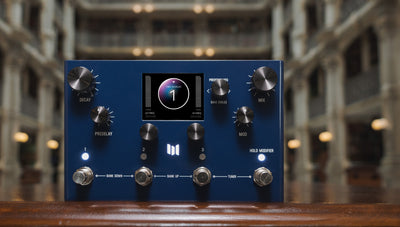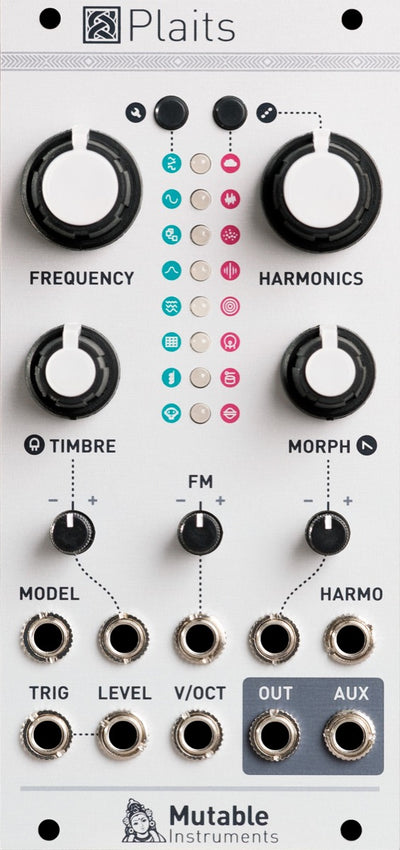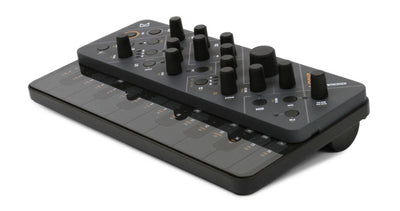The SoundForce DCO is an oscillator for Eurorack based on the architecture of the Juno-60/106 oscillator section. It is a modern homage to that sound using technology from the future. It provides true analog waveforms with digital stability. The new updated 2021 version includes a mini-jack (either type A or type B) MIDI interface for even better tuning and allows you to avoid lossy digital -> analog -> digital conversions. The tuning has been improved further with little more stability at both extremities of the VOCT range. The audio path is the same as the original DCO and you can expect the same pleasing sound quality.
Some tech-talk:
A DCO is not an all-analog VCO but also not a digital oscillator. It’s an hybrid design that combines the best of both. Similarly to many VCO’s, the DCO generates its core waveform, the saw wave, by charging a capacitor in an op-amp integrator configuration. A VCO will restart the waveform cycle when the signal has reached its maximum amplitude. But the DCO starts an new cycle when a micro-controller, a small computer chip, commands it to. The micro-controller also controls the rate at which the capacitor is charging, hence the frequency of the oscillator. As with a digital oscillator, the DCO acquires the CV input voltages and turns them into numbers that will later set the frequency of the oscillator. This is done inside the micro-controller using 16 bits sigma-delta analog to digital converters. All signals are true analog signals. The PULSE wave is derived from the SAW wave using a comparator and the SUB oscillators are generated using a flip-flop IC. Furthermore, the use of a very modern micro-controller with built-in 32 bits timers have improved the frequency accuracy a lot compared to the original design.
Features:
The SoundForce DCO features 10 slide pots (faders) reminiscent of the Roland synths. 5 sound sources are available: SAW, PULSE, SUB1 (1 octave lower), SUB2 (2 octaves lower) and NOISE. The built-in mixer allows you to mix them together using the faders and the MIX output jack. The PULSE has manual pulse width control, as well as PWM with a CV input and an attenuator. An FM input is also available with an attenuator. The oscillator can be hard synced to another oscillator using the SYNC input. The SYNC input jack is shared with the MIDI interface GATE output. A little switch at the back let you choose between the two.
MIDI interface:
The new MIDI input allows you to connect the DCO directly to your computer’s MIDI interface or any hardware with a MIDI output (no USB-MIDI). For totally flawless MIDI tuning, a switch at the back allows you to deactivate the Coarse/Fine tuning sliders and VOCT CV input. In that mode, the FM input and FM attenuator are functional and you can still affect the MIDI tuning if you’d like to. The other mode is combining the incoming MIDI notes (if you are sending some), the CV inputs and the Coarse/Fine sliders to generate the DCO’s frequency.
Specifications:
– 16HP
– Frequency range : 20Hz – 14kHz
– Depth: 38mm (including power connector)
– Power: +12V 100mA, -12V 30mA
– V/OCT input range -3 to 7V
– FM input range -5V to 5V
– PWM input range -5V to 5V
- Dimensions
- 16 HP
- 38 mm deep
- Current Draw
- 100 mA +12V
- 30 mA -12V



